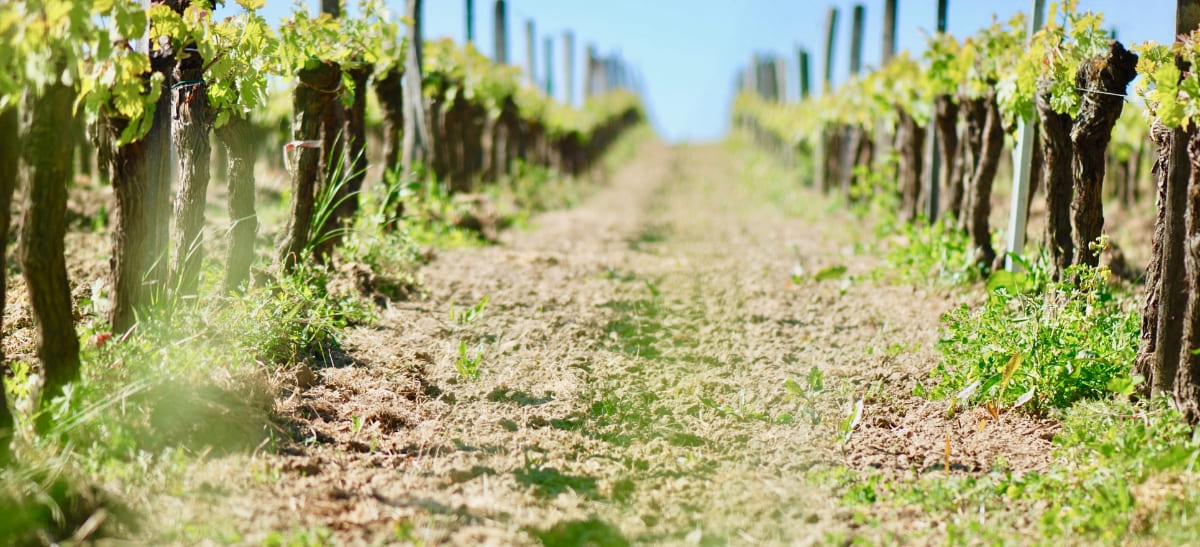Early Bird
Deadline
January 31, 2026
Judging
Date
May 18, 2026
Winners
Announced
June 10, 2026

Having a working knowledge and understanding in geology, along with Pedology-study of soil and Edaphology- the study of the influence of soil, is indispensable for the successful harvest of wine grapes and quality wine production. Selecting a soil for wine is tricky because the soil type needs to work for both the vine and the rootstock (a healthy underground part used for grafting and avoid damage). Soil influences the quality of the wine. It also affects the characteristics of wine grape through their supply of minerals and nutrients to grapevines. Hence it is necessary to understand the type of soil and its attributes which contribute to what we sense in a wine glass. A good soil type can be determined by its texture, depth, color, its organic composition, pH, drainage etc. Here is a brief outline of the primary soil types.
Sandy soils are made of large particles, which are well-drained and retain heat. Because sand drains moderately which works well in wet climates but for regions with drought, sandy soils can be problematic. A wine grown in warm climatic region is softer with less color, lighter acidity, and tannin. Whereas in cooler region, sandy soils retain heat and drain well to produce highly aromatic wines. Good thing is that this type of soil retains more heat and less moisture thus removing the possibility of diseases, but in some cases, it can also cause vine dehydration. Plus point of sandy soil is that it is resistant to the nasty louse phylloxera from attacking.
Regions with sandy soil: Bordeaux’s Medoc and Graves
Grapes that love it: Zinfandel, Cabernet Sauvignon
Clay soil is made up of tiny particles that tend to store water for a longer period of time. In extreme weather condition, the tendency of the soil to remain cooler increases which greatly benefits the grape vines. In warmer climates, clay soils retain moisture. These soils are said to produce exceptionally bold and muscular red and white wines of the world.
Regions with clay soil: Barossa Valley, Pomerol
Grapes that love it: Sangiovese, Merlot
Most experts suggest loamy soil as the best type of soil for grape growing. A crumbly mix of sand, silt, and clay when blended with other soils in the right amounts offers the ideal soil type for grape growing. This is because the clay in loam drains well but contains a moderate amount of water and nutrients and generally lies within the preferred pH range.
Regions with loam soil: Sonoma Valley, Napa Valley
Grapes that love it: pinot noir
As the name suggests, volcanic soil results from a long-ago volcanic eruption. This soil is finely grained, retains and reflects heat, drains well and holds water. Volcanic soil is rich in specific minerals like iron, calcium, magnesium, and potassium. Not all volcanic soils are suitable for growing vines, but when certain conditions are fulfilled then the magic comes to the glass. It is also thought to impart a rusty taste to wines.
Regions with volcanic soil: Sicily, Santorini
Grapes that love it: Assyrtiko, Nerello Mascalese
Limestone is famous for quality winemaking, indeed, it is found in many famous regions. It is formed from the decomposed bodies of fish and other organic material which once lived in the ancient seabed. Limestone offers good drainage in wet weather but retains water in dry weather. It has high pH as it can reflect sunlight to promote photosynthesis. Wines made in limestone are long-lived and high acid wines.
Regions with limestone soil: Burgundy, Champagne
Grapes that love it: Pinot Noir, Sauvignon Blanc, Chardonnay
A silt soil has a fine texture than sand and is moderately porous. It has a good water retention property which is due to the small particles of soil, but this can also result in waterlogging, which can lead to vineyard disease. The wines are smooth and round with lesser acidity. Although some silt soils can be too fertile for quality winemaking, Loess is one good variety, which is a wind-blown type of silt with high proportions of silica.
Regions with silt soil: Oregon, Washington
Grapes that love it: Gruner Veltliner
Enter your Wines now and get in front of top Sommeliers, Wine Directors, and On-Premise Wine Buyers of USA.
